| Columns Retired Columns & Blogs |
You're a moron, Fremer, and always have been. LPs suck and always have.
In short, while every parameter of the Cornet 2 is adjustable, a few are not easily set—the usual tradeoff in a moderately priced arm.
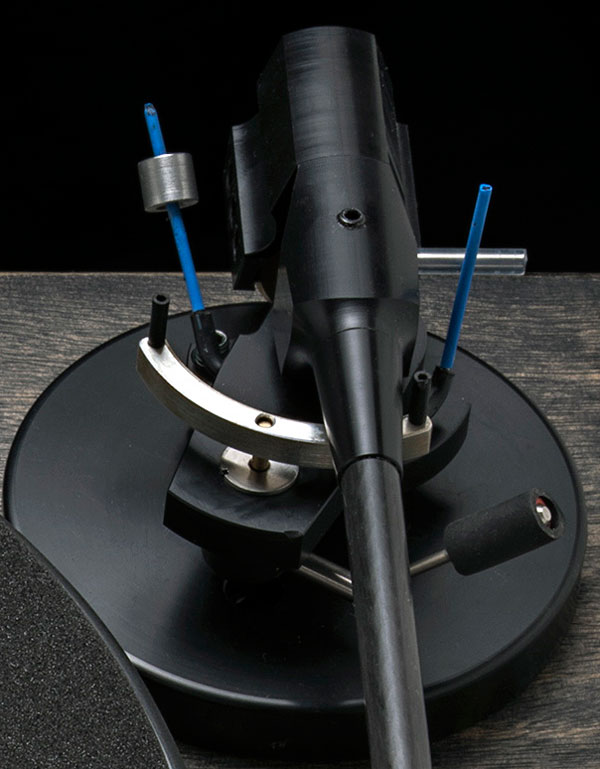
I found Pear Analogue's description of the Cornet 2 long on hyperbole and short on technical detail: unspecified are the arm's length, effective length, offset angle, and mass. This information should be provided for every tonearm. The instructions, too, are incomplete. There's no mention of how to set antiskating, and after instructing users to tighten the collet setscrews after lowering the arm stem into the shaft, Pear fails to remind them to loosen the screws before turning the Allen bolt to adjust VTA and SRA. The instructions for setting up azimuth and VTA are rudimentary: Azimuth is correctly set when the headshell is parallel to the record surface (not), and VTA and SRA are correctly set when the arm is parallel to the record surface (not). I understand that these are only baseline starting points, but the instructions should be more detailed. A video sent on a USB stick shows antiskating being set using a grooveless record (not).
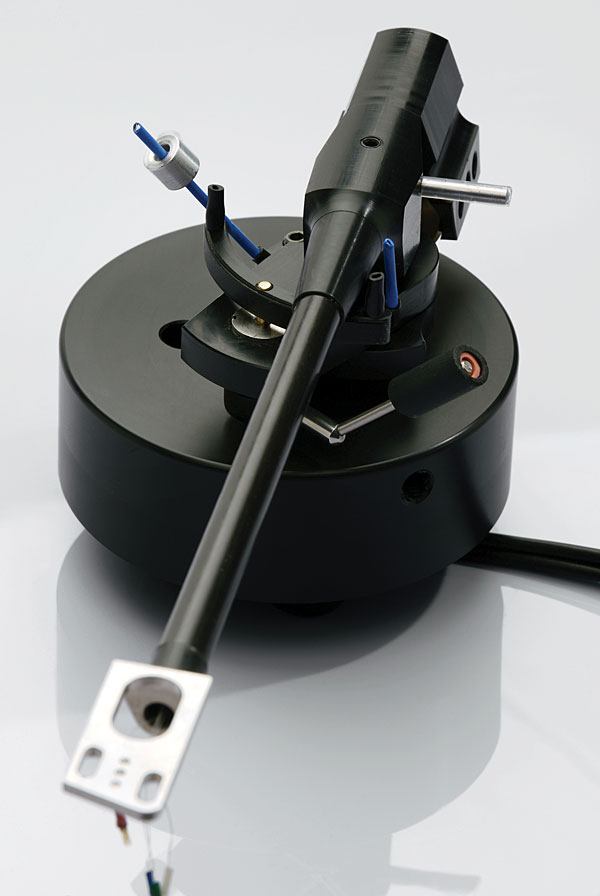
The phrase press-fit recurs often in the descriptions of tonearm and 'table. Where screws are used—eg, the grub screws that hold the arm shaft rigid in the POM armboard—they're of nylon, not metal. In fact, other than in the platter, bearing, and headshell, there is very little metal and screws are few.
When tapped, the Cornet 2 transmitted only a very faint sound. It clearly is better damped than the Origami PU7 arm supplied with the Palmer 2.5 turntable, which together cost $11,990. Purchased as a package, the Kid Thomas, Cornet 2, and Bastin power supply cost $9995 (a $190 discount)—or $7995 (a $195 discount) without the Bastin supply.
While the Palmer's plinth doesn't pass along much in a thump test, the Pear's was as lively as the Origami arm. At a moderate volume level, even a mild tap produced a fairly loud, broad-range, drum-like, almost hollow-sounding thump through my speakers.
A sonic comparison of the Pear and Palmer seemed therefore valid, especially considering that I listened to the Pear directly after the Palmer, and the two share similar design philosophies.
Smooth, Evenly Balanced Sound
I used some of the same cartridges that I used in the review of the Palmer 2.5 turntable and Audio Origami tonearm—the Lyra Etna, Atlas, and Titan i, and Ortofon's Quintet Black and A90—and added Miyajima Labs' Madake, which I reviewed in December 2014. And I played, among others, the same records I'd used for the Palmer review.
As I'd done with the Palmer, I began with the Lyra Etna. The Etna sounded too rich for me in the Kid Thomas and Cornet 2, but the Titan i and Atlas produced better overall balance; both of the latter are somewhat leaner in the mids, and somewhat faster and more extended on top.
Because the Pear 'table is a Tom Fletcher design, after listening but before writing I reread my reviews of Nottingham Audio's decks. In the February 2003 issue I reviewed the budget Horizon model, fitted with a Rega Research RB-250 arm, and found it a "smooth-sounding" performer that was impressive for the money ($1000). I had Nottingham's $10,000 Annalog 'table and arm in for a listen, and found the sound soft, diffuse, and uninvolving.
In July 2005 I reviewed the Nottingham Deco, with Ace-Anna arm and Deco power supply ($38,499). The Ace-Anna was yet another variant of the "stabilized unipivot" common to Nottingham arms. The less expensive stabilized-unipivot Ace Space arm looks more similar to the Cornet 2, particularly its brass counterweight and the plastic collar in which it slides, though in the Cornet 2 POM replaces most of the Ace Space's metal.
In my 2005 review, I compared the Deco and Ace-Anna with the Simon Yorke S7 turntable and arm, using the Titan i in both. I "didn't recognize" the Titan in the Deco/Ace-Anna combo, describing its sound as "soft, indistinct. Transients were smoothed over, details lost, and the entire presentation lacked sonic involvement."
When I swapped out the Ace-Anna for the Graham Engineering 2.2 arm (that gives you an idea of how long ago this was!), the Deco sprang to life. I ended up thinking that the sound and the fit'n'finish of the Deco, Tom Fletcher's "statement" product at that time, weren't worth the money, and posited that the Nottingham Dais ($7499 without tonearm) was the line's sweet spot. Now, years later, here was a similarly priced Fletcher design—his final thoughts on turntable and tonearm design—a turntable-tonearm combo that sounded just as I'd described the Deco and Graham nearly a decade before: "The Deco's overall personality was elegant and deliberate, with an inviting underlying warmth. . . . Familiar music seemed to come out of the grooves with a slight honey coating."
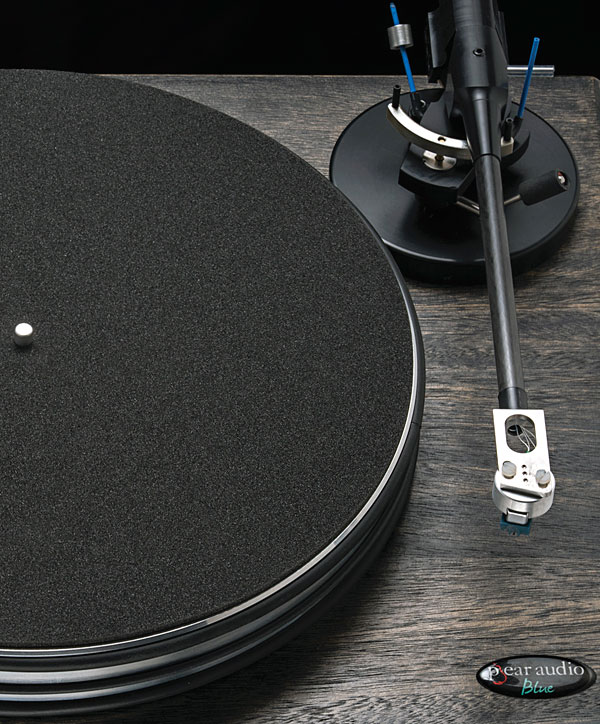
However, that's how the Pear sounded with the Cornet 2, not the Graham arm. Though a great deal of time has passed since I last heard the Ace-Anna and the far more expensive Deco, I suspect that the Cornet 2 is faster, leaner, and better focused, despite the many similarities of construction. Chalk it up to the substitution of POM for metal or to the modified bearing and damping fluid? Or did the Kid Thomas, too, contribute to the better focus and faster overall sound?
For whatever reason or reasons, the Pear Analogue Kid Thomas turntable and Cornet 2 tonearm produced a rich, expansive midrange and a smooth, neutral tonal balance. The phrase rich and creamy came to mind. Bass extension was good, if not the last word; and though high-frequency transients were clean, they weren't as sharp and fast as can be had, even from other 'tables at similar prices. The top end never glistened, and that's how many listeners like it.
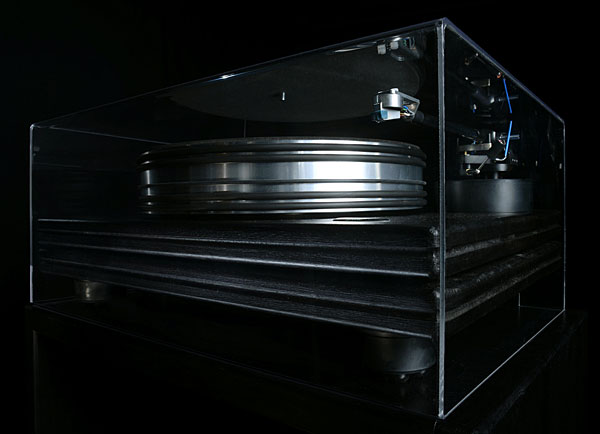
But even if a bit overprominent, that midrange was something special, with black backgrounds and tape-like musical flow and drive. With no hard edges sticking out and no obvious faults, the combo's sins were of omission, and made for a smooth musical ride. The macrodynamic presentation was very good, but again, other 'tables, many of them more expensive, produce greater slam, as does one at a similar price: the VPI's Classic 3 ($6000). But only with VPI's 3D-printed arm ($3000) would the Classic 3 approach the Pear's tonal neutrality and smoothness.
I can't be 100% certain without a direct A/B comparison, but I'd say that the Palmer Audio 2.5 with Origami arm and the Pear Audio Analogue Kid Thomas with Cornet 2 arm have very similar sounds, the latter being slightly less dynamic but somewhat smoother overall, and with greater drive and perceived speed stability.
Regardless of which cartridge I used, the types of music I most enjoyed through this pair of Pears were classical, acoustic jazz, and female voices. Interpreti Veneziani's recording of Vivaldi's The Four Seasons, recorded at AIR Studios in London with all-tube microphones (LP, D2D VALDC001), was reproduced with an ideal blend of string sheen and wood. The Pear Analogues' sound was ideal for jazz singer Cécile McLorin Salvant's WomanChild (LP, Mack Avenue 1072) but was less so for rock, though amplified music was never seriously shortchanged. But if the latter is what you mostly listen to, look elsewhere, for something with more grit, slam, and punch.
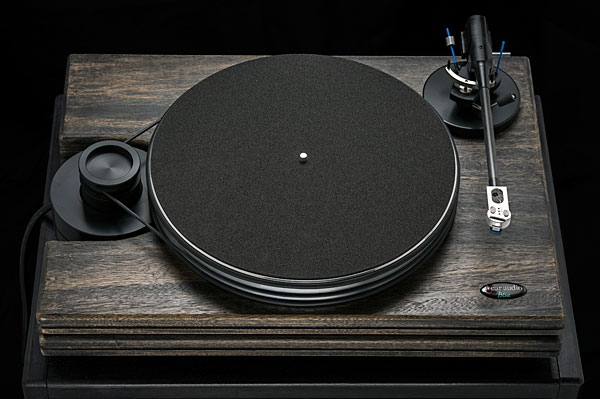
Conclusions
Writing back-to-back reviews of two turntables with wooden plinths, and heavy platters driven by small, low-torque motors, was a pure coincidence. That they sounded more similar than different probably is probably no coincidence at all. For some, Pear Audio Analogue Blue's Kid Thomas turntable and Cornet 2 tonearm will sound too damped and rich in the midrange. Others, especially those who listen mostly to classical and acoustic jazz, will find its rich, smooth sound ideal. Just be sure to match the Pears with a "fast," well-extended cartridge and a phono preamp with appropriate rhythm'n'pace abilities, or it might sound a bit sluggish. On the other hand, if you like your sound thick and rich, you can have that too.
Whatever they may be, the improvements that Tom Fletcher made in his final design have resulted in better-focused, more transparent, faster-paced sound. Many who are looking to spend just under $10,000 for a smooth, refined sound from their LPs will find the Kid Thomas and Cornet 2 visually and sonically appealing.